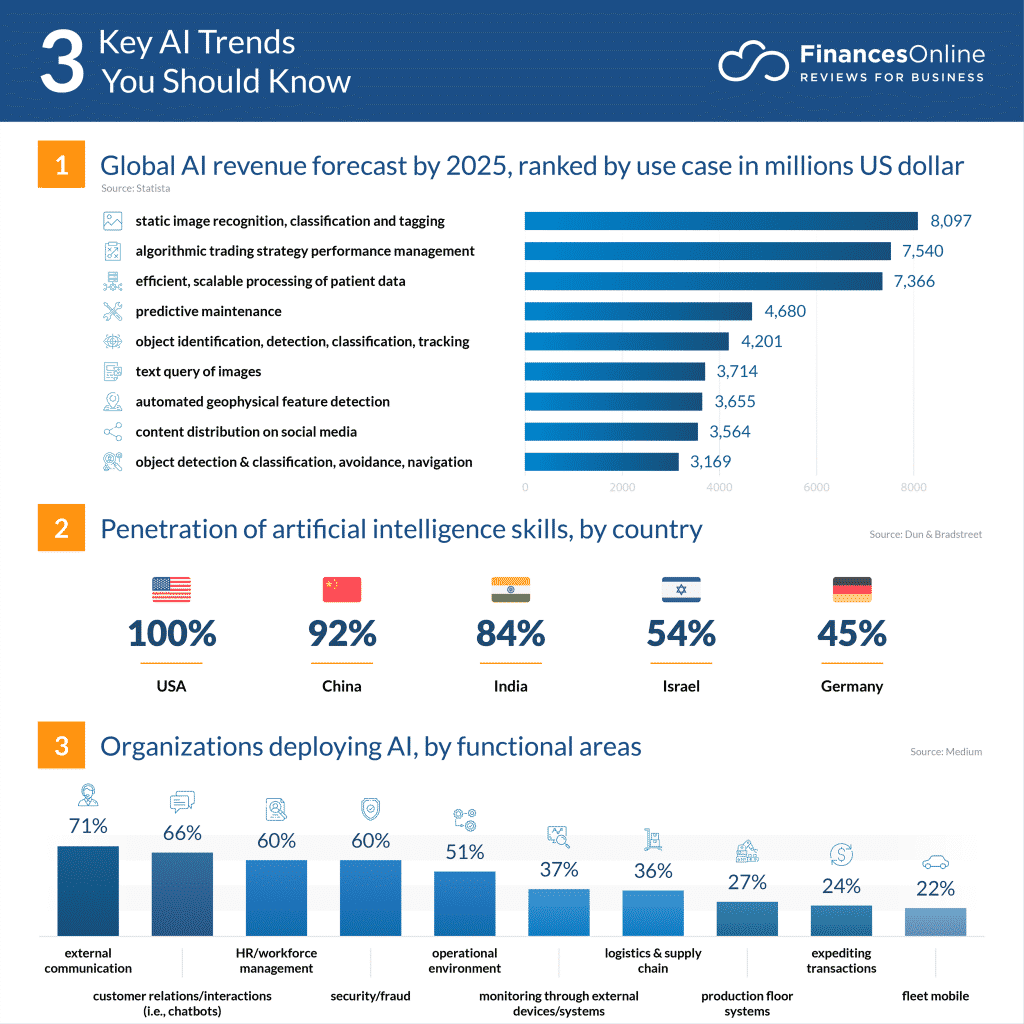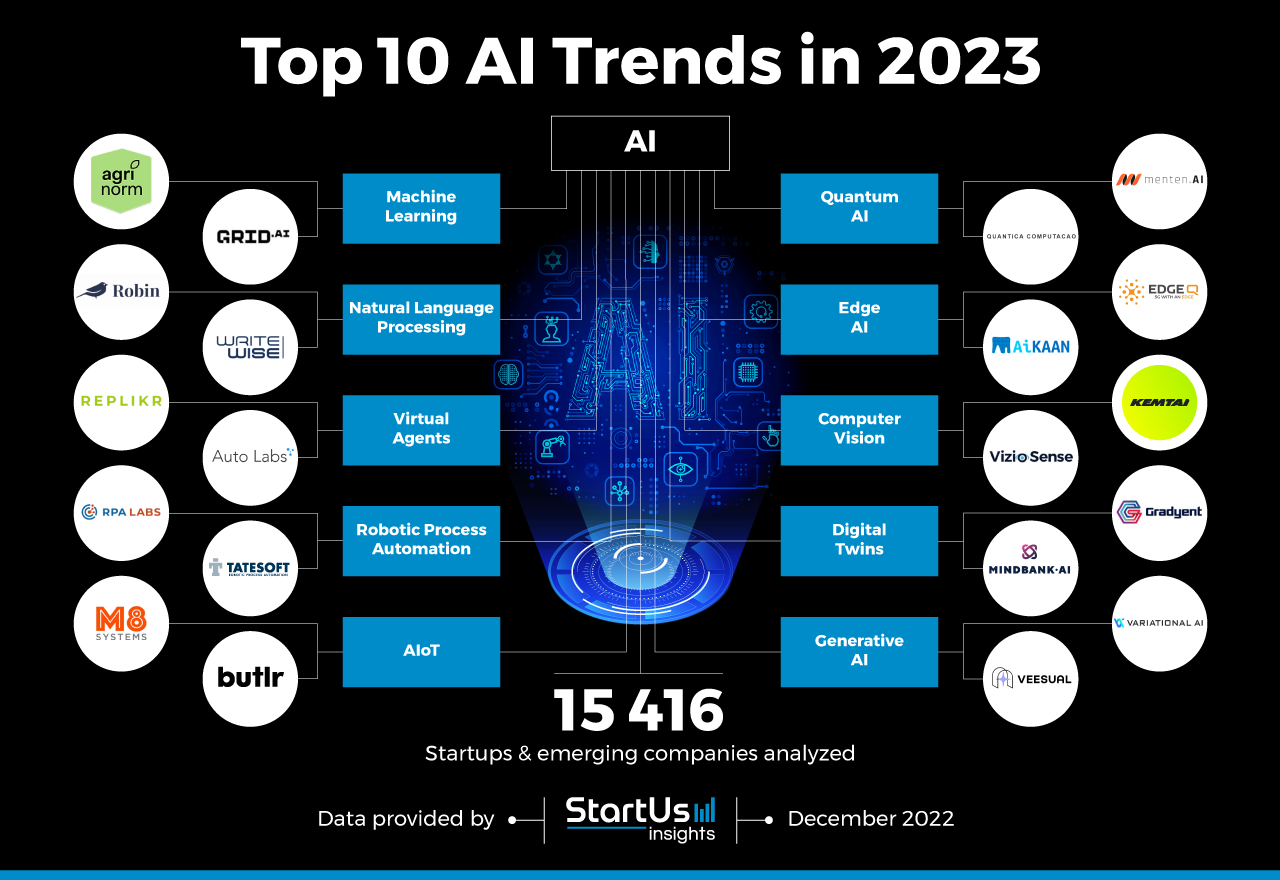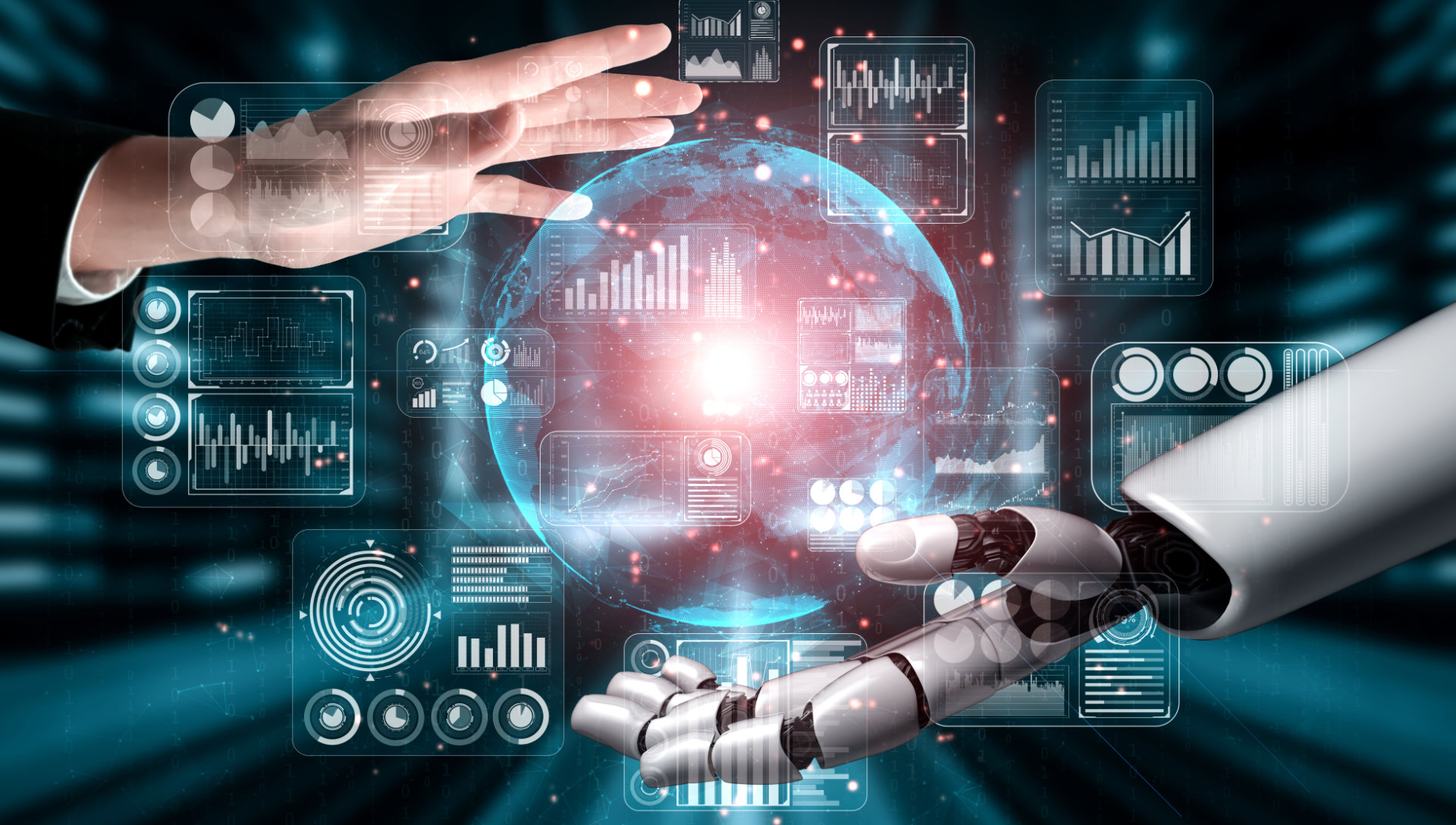The Future of AI: Trends to Watch in the Next Decade

Artificial intelligence (AI) is rapidly evolving technology that is already having a major impact on our world. From self-driving cars to facial recognition software, AI is becoming increasingly prevalent in our daily lives. As we look to the future, it is clear that AI will continue to play an increasingly significant role in our society.

Here are some of the key trends that we can expect to see in the next decade:

- Increased Adoption of AI in Business: AI is already being used by businesses of all sizes to improve efficiency, productivity, and customer service. In the next decade, we can expect to see even more businesses adopting AI, as they become increasingly aware of its potential benefits.
- AI-Powered Automation: One of the most significant impacts of AI will be the automation of tasks that are currently performed by humans. This could lead to major changes in the workforce, as many jobs become redundant. However, it is also likely to create new jobs that require skills in AI and data analysis.
- Development of More Sophisticated AI Technologies: AI technology is constantly evolving, and we can expect to see significant advancements in the next decade. This includes the development of more sophisticated algorithms, as well as new types of AI such as quantum AI and neuromorphic AI.
- Increased Use of AI in Healthcare: AI is already being used in healthcare to develop new drugs, diagnose diseases, and provide personalized treatment plans. In the next decade, we can expect to see even more applications of AI in healthcare, as it becomes increasingly integrated into our healthcare systems.
- AI-Enabled Autonomous Vehicles: Autonomous vehicles are one of the most highly anticipated applications of AI. In the next decade, we are likely to see self-driving cars become a reality, as automakers and technology companies continue to invest heavily in this area.
The impact of AI on our society is still being debated, and there are both risks and benefits to consider. However, it is clear that AI is here to stay, and it is likely to play an increasingly important role in our lives in the years to come.
Conclusion
The future of AI is bright and full of potential. As AI technology continues to evolve, we can expect to see it transform many aspects of our lives, from the way we work and play to the way we receive healthcare and transportation. The opportunities for AI are endless, and it is up to us to shape its future and ensure that it is used for the benefit of humanity.# The Future Of Ai: Trends To Watch In The Next Decade
Executive Summary
The field of artificial intelligence (AI) is rapidly evolving, with new developments and applications emerging all the time. As AI technology continues to advance, it will increasingly impact various aspects of our lives and reshape entire industries. In this article, we will explore some of the key trends that will shape the future of AI in the next decade. From its growing impact on major industries like healthcare and finance to its potential for transforming our relationships with technology, this article offers insights into the exciting possibilities — and challenges — that lie ahead.
Introduction
Artificial intelligence (AI) has come a long way since its early roots in the mid-20th century. From powering self-driving cars to diagnosing diseases and even creating art, AI is already having a major impact on our lives. Many experts believe that we are only just scratching the surface of AI’s true capabilities, and that some of the most exciting and transformative applications of this technology are yet to come. In this article, we will take a look at some of the most important AI trends that we can expect to see in the next decade.
10 Trends That Will Shape the Future of AI
1. AI-Powered Automation Across Industries
AI-powered automation is rapidly becoming more sophisticated and affordable, and it will continue to proliferate across industries in the coming years. This will lead to increased productivity, lower costs, and new opportunities for businesses and workers alike.
- Increased Use of AI in Customer Service: AI-powered chatbots and virtual assistants are becoming more prevalent in customer service, helping businesses provide 24/7 support.
- Automating Repetitive Tasks: AI algorithms can be used to automate repetitive tasks like data entry and scheduling, freeing up humans to focus on more strategic and creative work.
- Automated Recruitment and Hiring: AI can be used to automate the recruiting and hiring process, such as screening resumes and scheduling interviews.
2. Advances in Natural Language Processing (NLP)
NLP is a field of AI that deals with the interaction between humans and computers using natural language. As NLP continues to develop, AI systems will become better at understanding and responding to human language. This will lead to new possibilities for human-computer interaction, such as more natural and intuitive voice-controlled devices.
- Improved Machine Translation: NLP algorithms are being used to develop more accurate and sophisticated machine translation tools.
- AI-Powered Language Learning Tools: NLP technology can be used to develop personalized language learning tools that adapt to the needs of individual learners.
- Natural Language Interfaces (NLIs): NLIs allow users to interact with devices and services using natural language commands.
3. Growth of AI in Healthcare
AI has enormous potential to transform healthcare by providing new tools for diagnosis, treatment, and care.
- AI-Powered Medical Diagnosis: AI algorithms can be used to analyze medical images like MRI scans and X-rays to identify potential health problems.
- Development of AI-Powered Drug Discovery Tools: AI can be used to analyze large sets of data to identify new drugs and therapies, as well as predict how effective a potential drug will be for a particular patient.
- Use of AI in Personalized Treatment Plans: AI can be used to develop personalized treatment plans for patients based on their individual health data.
4. Rise of AI in Finance
AI-driven technologies are transforming banking and finance.
- Algorithmic Trading: AI algorithms are increasingly being used to automate the trading process, resulting in faster and more efficient trades.
- AI-Powered Fraud Detection: AI-powered tools detect and prevent fraudulent transactions, helping protect consumers and financial institutions.
- Automated Risk Assessment: AI algorithms can be used to assess the risk of a potential loan or credit card application.
5. The Impact of AI on Human Relationships
As AI becomes more advanced, it will inevitably impact our relationships with technology and with each other.
- Development of AI-Powered Social Robots: AI technology can be used to develop social robots that interact and communicate with humans in a natural way.
- Real-Time Language Translation: AI can enable real-time language translation, breaking down language barriers and fostering global communication.
- Personalized Learning and Education: AI-powered tutoring platforms adapt to individual student learning styles, providing a personalized and effective learning experience.
Conclusion
As we have seen, the future of AI holds numerous possibilities. From its potential to transform industries like healthcare and finance to its impact on our relationships with technology and each other, there is no doubt that AI will continue to reshape the world as we know it. As AI continues to advance, it is important to consider both the potential benefits and the challenges that this technology presents. By working together, we can ensure that AI is used for the greater good and that everyone benefits from its transformative power.
Keyword Phrase Tags
- artificial intelligence (AI)
- AI trends
- future of AI
- AI in healthcare
- AI in finance

Pellentesque pharetra, mi id feugiat congue, sem sem aliquet sem, eget convallis ex risus eget leo. Nulla volutpat quam sit amet arcu scelerisque, et convallis purus sagittis. Integer pellentesque ultricies magna non fringilla. Vestibulum tincidunt nibh in ornare molestie. Nam consectetur nibh sed lorem viverra semper. Aliquam et sapien non sapien congue pharetra. Donec volutpat est eu felis consectetur lobortis. Ut auctor, sem sed eleifend ullamcorper, ligula mauris sodales ipsum, eget lobortis lorem lectus id diam.
Etiam dictum ligula id vestibulum maximus. Pellentesque habitant morbi tristique senectus et netus et malesuada fames ac turpis egestas. Vivamus mollis suscipit mauris. Nunc volutpat et risus a dignissim. Fusce mattis neque leo, nec sagittis quam dignissim ut. In semper quam sed turpis sagittis fringilla. Curabitur at pellentesque nisl. In urna quam, hendrerit quis velit in, maximus euismod libero.
Duis auctor ultricies lorem in luctus. Curabitur eu lacinia diam. Ut eget consectetur urna. Suspendisse id arcu in metus congue tempus. Praesent ex libero, sollicitudin in fringilla sit amet, gravida in enim.
Cras at ipsum egestas, dapibus ex a, ultricies felis. Morbi tristique nisl ut augue auctor tincidunt. Quisque aliquam convallis pulvinar. In eget dapibus massa. Donec pellentesque elementum tincidunt. Phasellus at posuere massa. Phasellus ac urna eget lectus pharetra pretium vel eget sem. In sed augue at turpis efficitur dictum. Aliquam pulvinar eros sit amet metus hendrerit, sed placerat velit rhoncus. Fusce id mauris rutrum tortor dapibus ultricies.
Curabitur eget dictum libero, eu tincidunt ante. Nulla quis ligula posuere, volutpat velit ut, sagittis turpis. Nunc ut libero a felis ultricies varius. Maecenas sollicitudin arcu sit amet laoreet lacinia. Ut lacus leo, aliquam vitae luctus ac, ornare a libero.
Duis sit amet elit hendrerit augue dignissim blandit sit amet eget risus. Proin purus lectus, sollicitudin sit amet sollicitudin non, malesuada eget neque. Nunc cursus eget turpis eu sagittis. Integer consequat lacinia nisi, vulputate pretium nisi faucibus et.
Cras at ipsum egestas, dapibus ex a, ultricies felis. Morbi tristique nisl ut augue auctor tincidunt. Quisque aliquam convallis pulvinar. In eget dapibus massa. Donec pellentesque elementum tincidunt. Phasellus at posuere massa. Phasellus ac urna eget lectus pharetra pretium vel eget sem. In sed augue at turpis efficitur dictum. Aliquam pulvinar eros sit amet metus hendrerit, sed placerat velit rhoncus. Fusce id mauris rutrum tortor dapibus ultricies.
Vivamus elementum purus placerat consequat ultricies. Suspendisse egestas vestibulum massa, in aliquam lectus finibus ac. Morbi ut accumsan dui, sit amet lacinia arcu. Sed at magna in libero consectetur ultrices. Vestibulum fringilla diam in nibh placerat tristique. Fusce vitae lorem quis dui posuere semper. Etiam auctor maximus volutpat. Vivamus at convallis erat. Integer arcu libero, dictum consectetur lectus in, tincidunt sagittis tortor.
Nunc nec aliquam erat, sit amet placerat eros. Praesent placerat ligula urna, at pharetra orci venenatis ac. Ut ornare euismod lacus, ac condimentum magna ornare eu. Sed augue ligula, aliquam non ante eget, ultricies dictum risus. Pellentesque habitant morbi tristique senectus et netus et malesuada fames ac turpis egestas.
Curabitur eget dictum libero, eu tincidunt ante. Nulla quis ligula posuere, volutpat velit ut, sagittis turpis. Nunc ut libero a felis ultricies varius. Maecenas sollicitudin arcu sit amet laoreet lacinia. Ut lacus leo, aliquam vitae luctus ac, ornare a libero.
Mauris odio lectus, vulputate nec ultrices ac, ullamcorper vitae magna. Nunc commodo eu nunc ac egestas. Mauris ultricies enim tristique tellus commodo tincidunt. Suspendisse sed consectetur augue.
Donec ut tristique ante. Cras enim libero, placerat a augue vel, aliquam venenatis turpis. Morbi eget rhoncus nulla.
Nunc nec aliquam erat, sit amet placerat eros. Praesent placerat ligula urna, at pharetra orci venenatis ac. Ut ornare euismod lacus, ac condimentum magna ornare eu. Sed augue ligula, aliquam non ante eget, ultricies dictum risus. Pellentesque habitant morbi tristique senectus et netus et malesuada fames ac turpis egestas.
Phasellus id dui id tortor viverra maximus eget id magna. Nam cursus nec arcu ut pretium. Integer ut quam quis dui accumsan sodales. Nunc nec mauris et massa interdum gravida.
Cras vestibulum consectetur auctor. Cras a nunc ut risus congue mattis. Fusce volutpat dui nec efficitur maximus. Integer et metus ut felis mattis lobortis vel at odio. In hac habitasse platea dictumst.